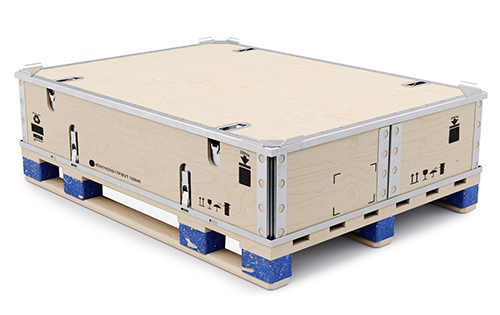Quality in Every Mold: Plastic Container Manufacturer Knowledge
Quality in Every Mold: Plastic Container Manufacturer Knowledge
Blog Article
Effective Industrial Recycling Solutions for Sustainable Product Packaging: A Comprehensive Guide
In today's significantly environmentally-conscious world, the demand for lasting packaging solutions has never ever been greater. To meet this demand, companies across markets are actively seeking efficient industrial recycling services. Nonetheless, navigating the complex landscape of sustainable packaging can be testing without a detailed overview. That's where this extensive overview on reliable commercial recycling remedies for lasting product packaging comes in. By exploring key areas such as product packaging product option, designing for recyclability, implementing reusing facilities, collaborating with recycling companions, and tracking and measuring recycling success, this guide will equip you with the understanding and devices required to make educated decisions and drive positive change within your company. Whether you're a packaging expert, sustainability supervisor, or just thinking about the topic, this guide will supply useful insights and approaches to aid you browse the world of lasting packaging.
Packaging Material Selection
The selection of packaging materials plays an essential duty in ensuring the sustainability of industrial recycling solutions. The choice of materials is essential in reducing environmental impact and making best use of reusing performance when it comes to lasting product packaging. Choosing the appropriate materials can help in reducing waste generation, preserve sources, and promote a round economic climate.
One essential element to consider in product packaging product choice is recyclability - processing company. Materials that can be easily reused and incorporated back right into the production cycle are preferred. As an example, products like cardboard, paper, glass, and certain kinds of plastics can be reused multiple times without shedding their quality. On the other hand, products that are challenging to reuse, such as non-recyclable composites or blended plastics, can create obstacles for the reusing procedure and might finish up in incinerators or landfills.
Another consideration is the usage of naturally degradable and eco-friendly materials. Product packaging made from renewable sources, such as plant-based plastics or biopolymers, can help decrease dependence on nonrenewable fuel sources and alleviate climate change. Furthermore, eco-friendly materials damage down normally with time, minimizing the buildup of waste in landfills.
Additionally, the weight and quantity of packaging materials must be lessened to reduce transportation costs and energy usage. Light-weight products not just require fewer resources throughout production but likewise add to decrease carbon exhausts during transportation.
Creating for Recyclability
In order to guarantee the recyclability of packaging materials, thoughtful style is essential. Creating for recyclability involves creating product packaging that can be easily sorted, separated, and processed in reusing centers. One vital aspect of creating for recyclability is the option of products. Product packaging developers need to focus on the usage of materials that are commonly accepted for recycling and have developed reusing infrastructures. Materials such as glass, light weight aluminum, and certain kinds of plastic, like family pet and HDPE, are typically recycled and should be preferred over products that are pricey or hard to reuse.
One more essential factor to consider in designing for recyclability is the removal of unneeded components or products. By reducing the variety of layers, coverings, and additional elements, packaging can be made less complex and simpler to recycle. Furthermore, developers must aim to lower making use of combined materials, as they can make complex the recycling procedure.

Implementing Recycling Infrastructure
Reliable implementation of reusing infrastructure is critical for the success of industrial reusing solutions. Without proper framework in place, the reusing procedure becomes ineffective and ineffective, impeding the general objective of sustainable packaging.
To apply click over here now recycling facilities effectively, several crucial elements require to be considered. There ought to be a well-organized collection system that assists in the splitting up and collection of recyclable products. This can include assigned recycling containers in public rooms, along with collaborations with waste management business for curbside pickup and sorting.
As soon as gathered, the recyclable materials need to be transported to reusing centers in a timely manner. This requires efficient logistics and transportation networks, making sure that the materials reach the proper centers without hold-up.
At the reusing centers, progressed sorting and processing modern technologies should be in area to separate various sorts of products properly. This consists of the usage of automated arranging equipments, optical scanners, and hand-operated sorting strategies.
In addition, there must be a robust market demand for recycled materials. This can be achieved via cooperations with producers and markets that utilize recycled materials in their production procedures. Producing a steady market for recycled materials incentivizes the reusing industry and advertises the round economic situation.
Teaming Up With Recycling Allies

One key facet of working together with recycling companions is the establishment of clear communication networks. It is essential to develop open lines of communication to facilitate the exchange of information, updates, and comments. This enables both events to stay educated regarding the progress of reusing campaigns and resolve any challenges or issues that might occur.
Additionally, cooperation can include joint efforts in developing and implementing reusing programs. Recycling companions can provide useful insights and guidance in creating efficient collection systems and establishing the most proper recycling technologies. By interacting, organizations and recycling companions can maximize the recycling procedure and reduce waste.
Furthermore, cooperation can expand beyond the operational facets of reusing. It can also include campaigning for and education and learning campaigns. see this site By joining pressures, businesses and recycling partners can increase understanding concerning the importance of recycling and promote the fostering of lasting packaging techniques amongst consumers and other stakeholders.
Tracking and Measuring Recycling Success
To make certain the efficiency of commercial reusing remedies and the success of lasting product packaging goals, it is crucial for services and their recycling companions to develop a comprehensive system for tracking and measuring recycling success (industrial metal packaging). Tracking and measuring recycling success allows businesses to assess the impact of their recycling initiatives, determine locations for enhancement, and set significant targets for future development
One way to track recycling success is via the usage of information collection and evaluation tools. By collecting data on the quantity of product packaging waste produced, the percentage of waste that is recycled, and the sorts of materials being reused, organizations can obtain beneficial insights into their recycling efficiency. This information can then be evaluated to recognize fads, patterns, and areas of ineffectiveness.
Another vital aspect of tracking and gauging reusing success is establishing clear and standardized metrics. This enables services to compare their performance against sector criteria and track their development gradually. Metrics such as recycling prices, waste diversion rates, and greenhouse gas emissions can give a quantitative measure of a business's reusing success.

Conclusion
In final thought, executing effective commercial recycling services for lasting packaging calls for cautious factor to consider of packaging product selection, designing for recyclability, applying reusing framework, working together with reusing companions, and monitoring and determining reusing success. By integrating these practices, businesses can contribute to a much more environmentally-friendly and sustainable technique to packaging, decreasing waste and promoting the circular economy.
By checking out key locations such as product packaging material option, developing for recyclability, applying recycling framework, teaming up with recycling companions, and tracking and gauging recycling success, this overview will certainly outfit you with the expertise and tools necessary to make enlightened news choices and drive positive adjustment within your company. Packaging designers should prioritize the usage of products that are extensively approved for reusing and have developed reusing infrastructures.Collaboration with reusing companions is necessary for the successful execution of commercial reusing solutions and the success of sustainable packaging objectives. By joining pressures, companies and recycling partners can increase recognition concerning the importance of recycling and advertise the fostering of lasting packaging methods among customers and various other stakeholders.
By accumulating information on the amount of packaging waste created, the percentage of waste that is reused, and the kinds of products being reused, services can get useful understandings into their recycling efficiency.
Report this page